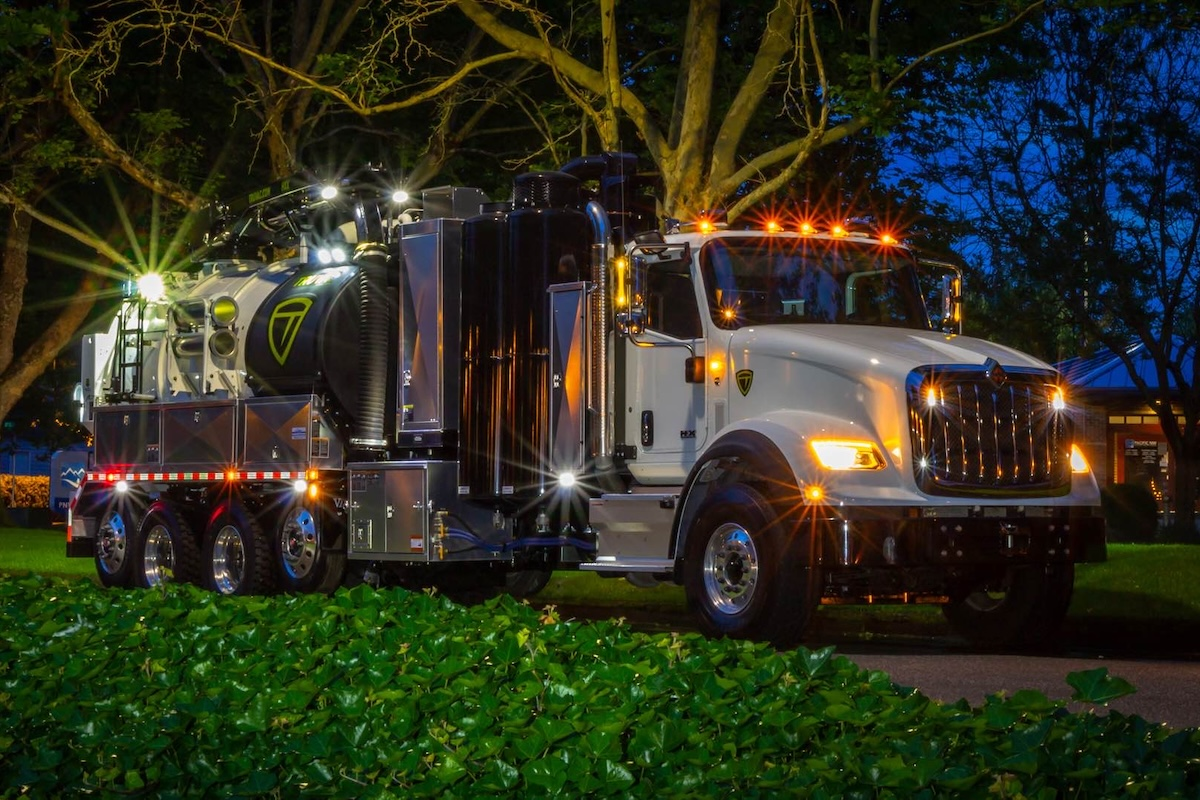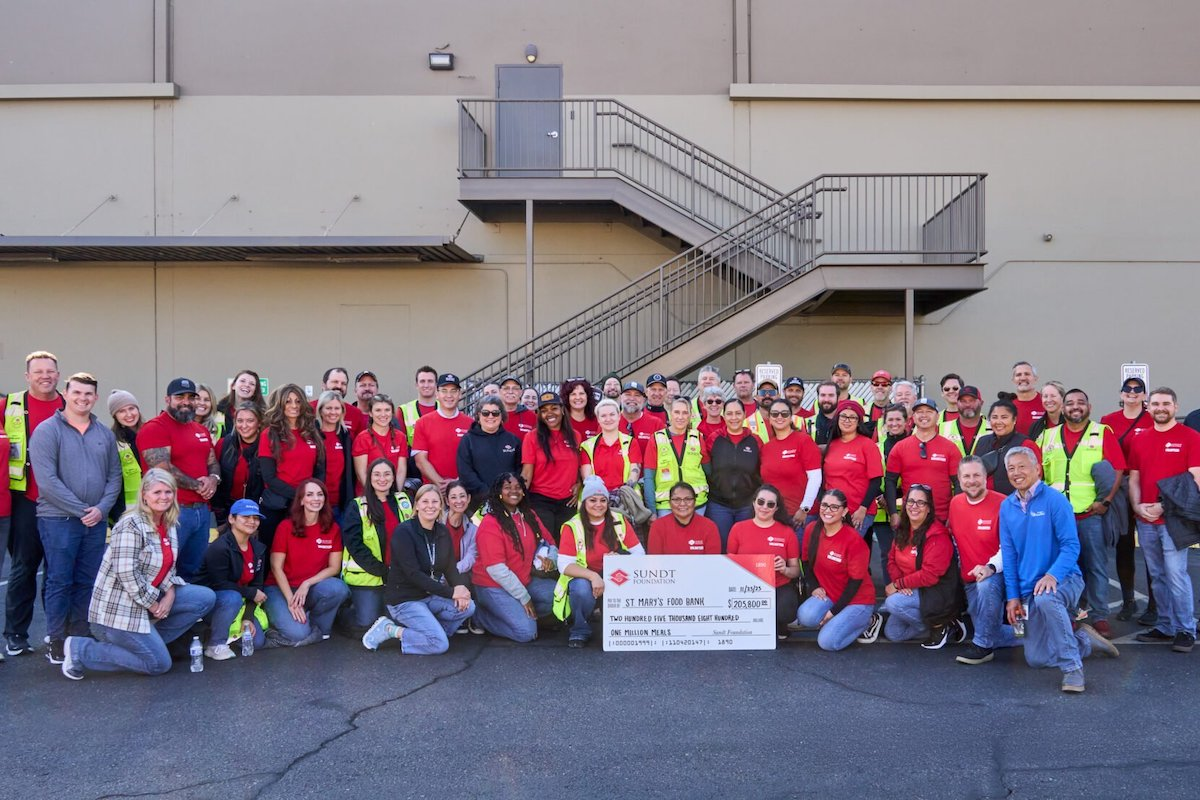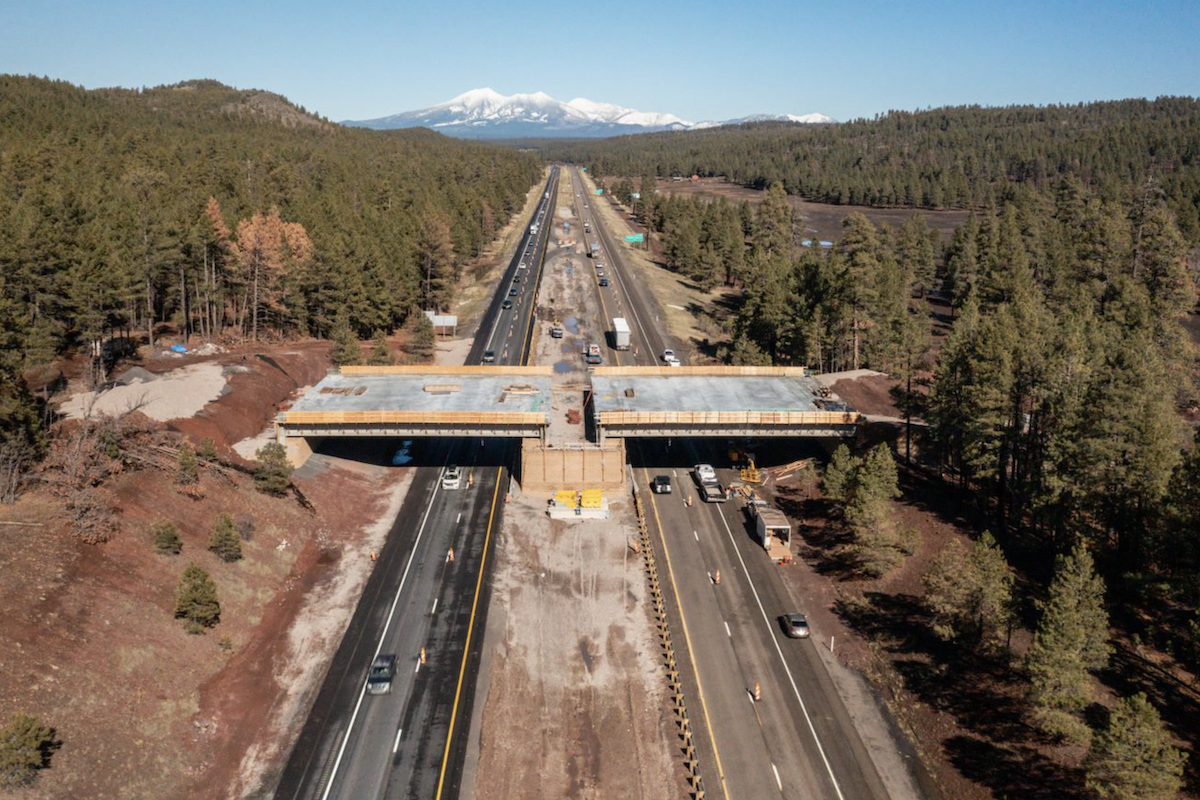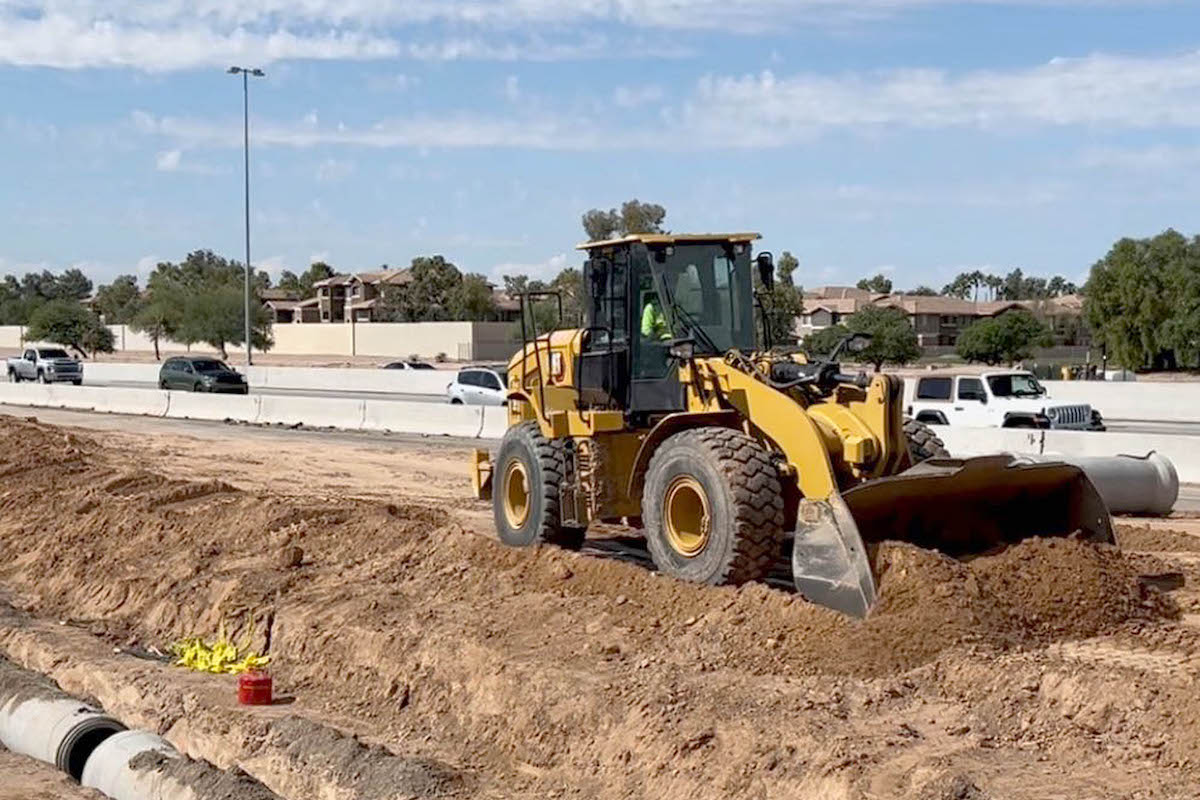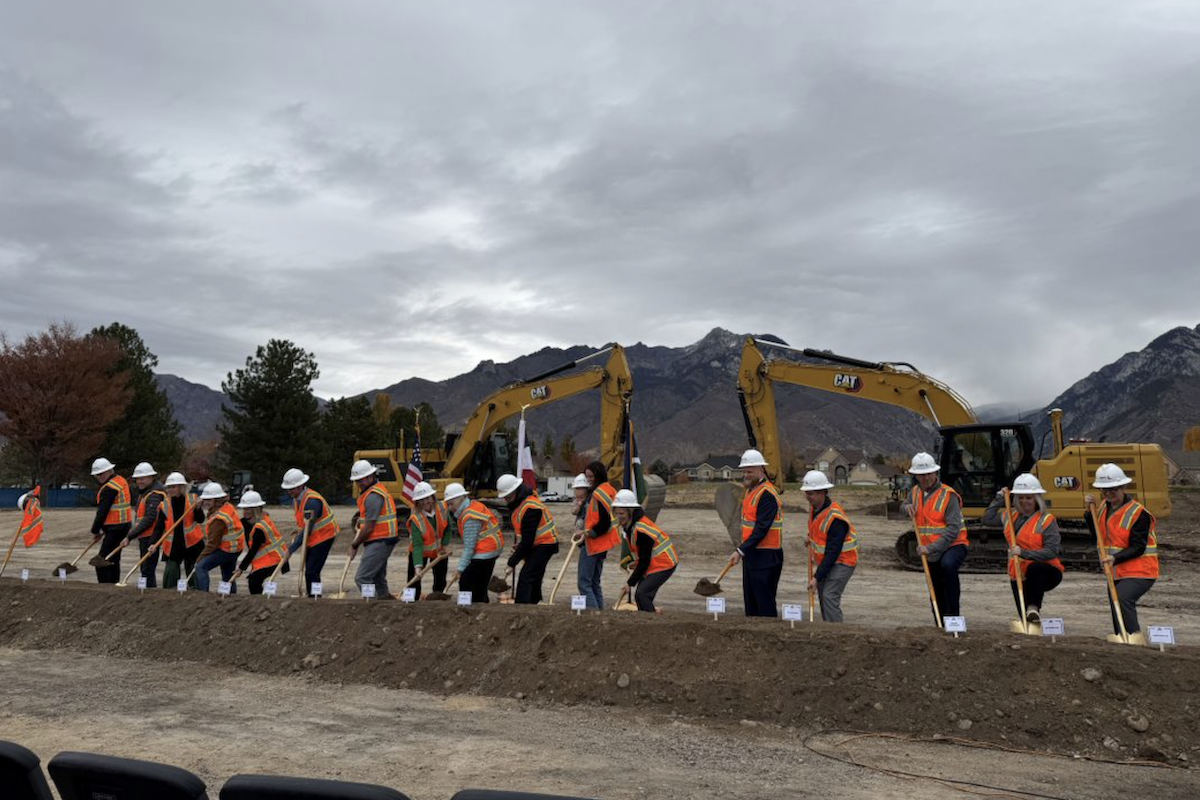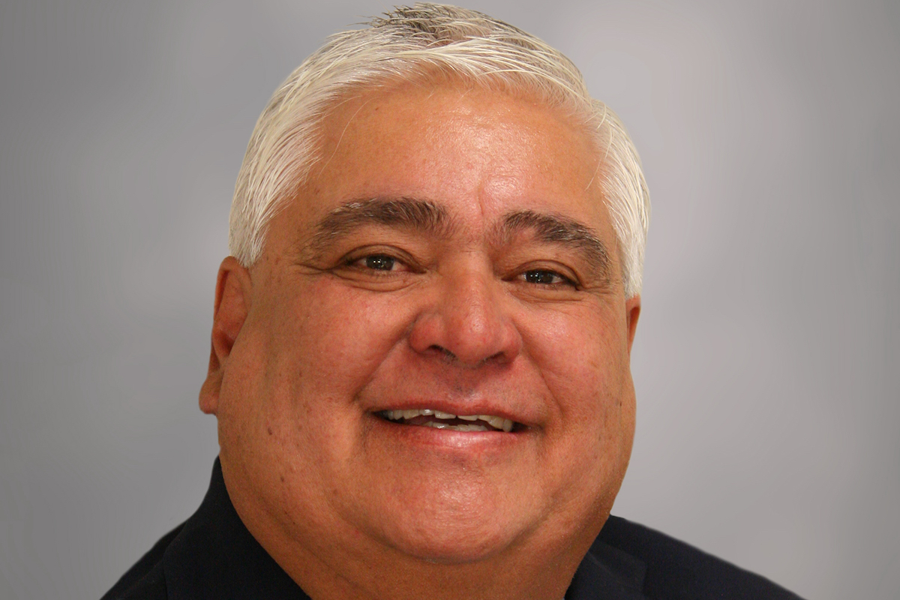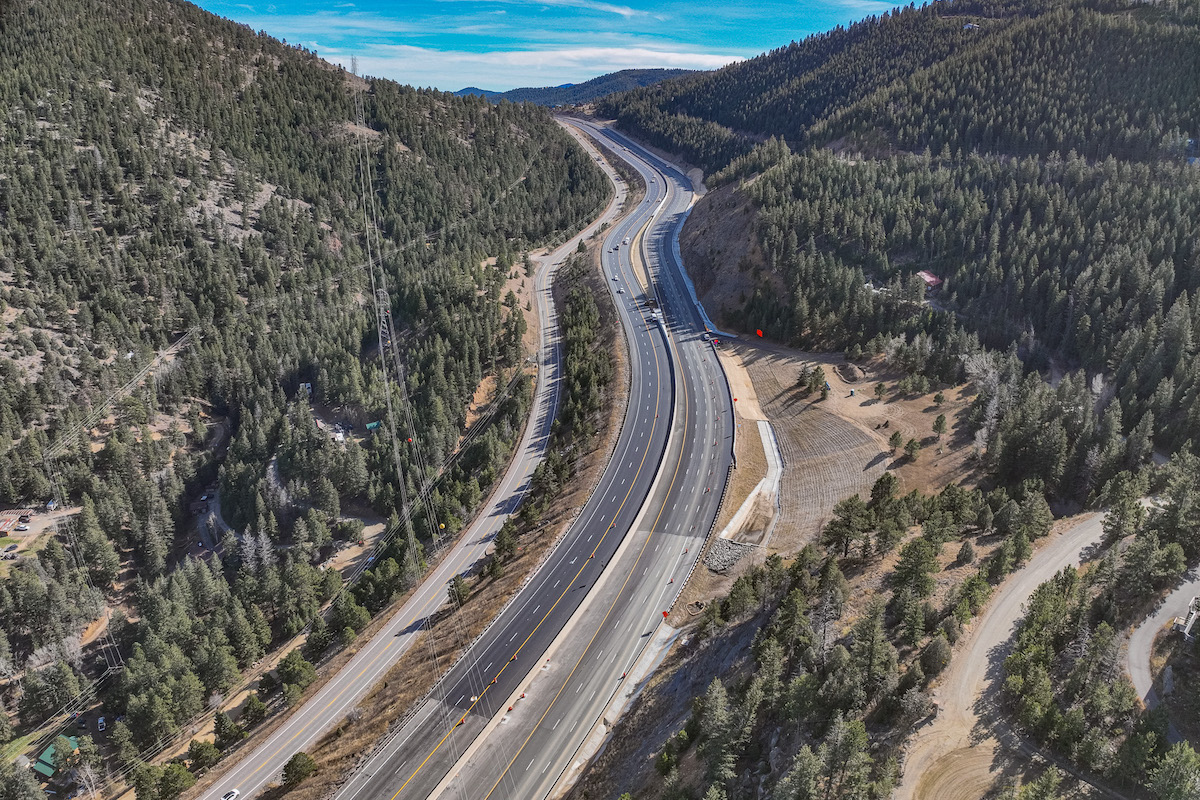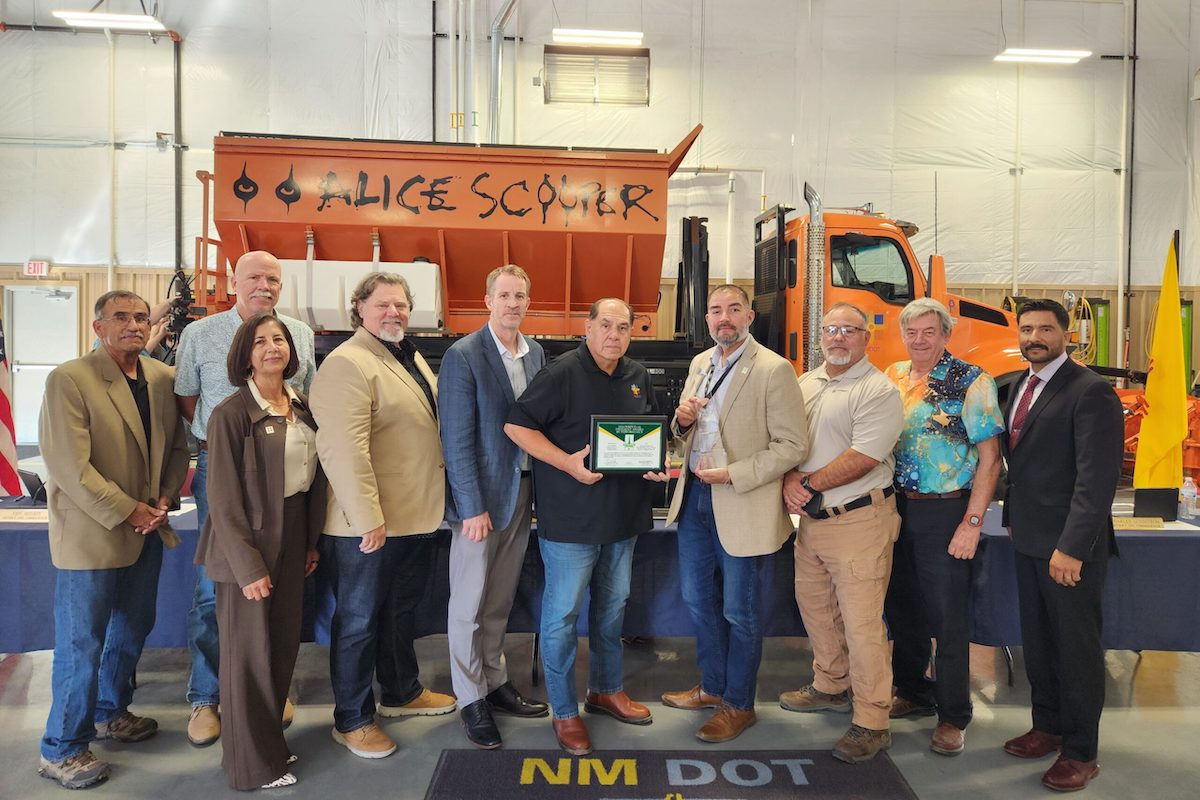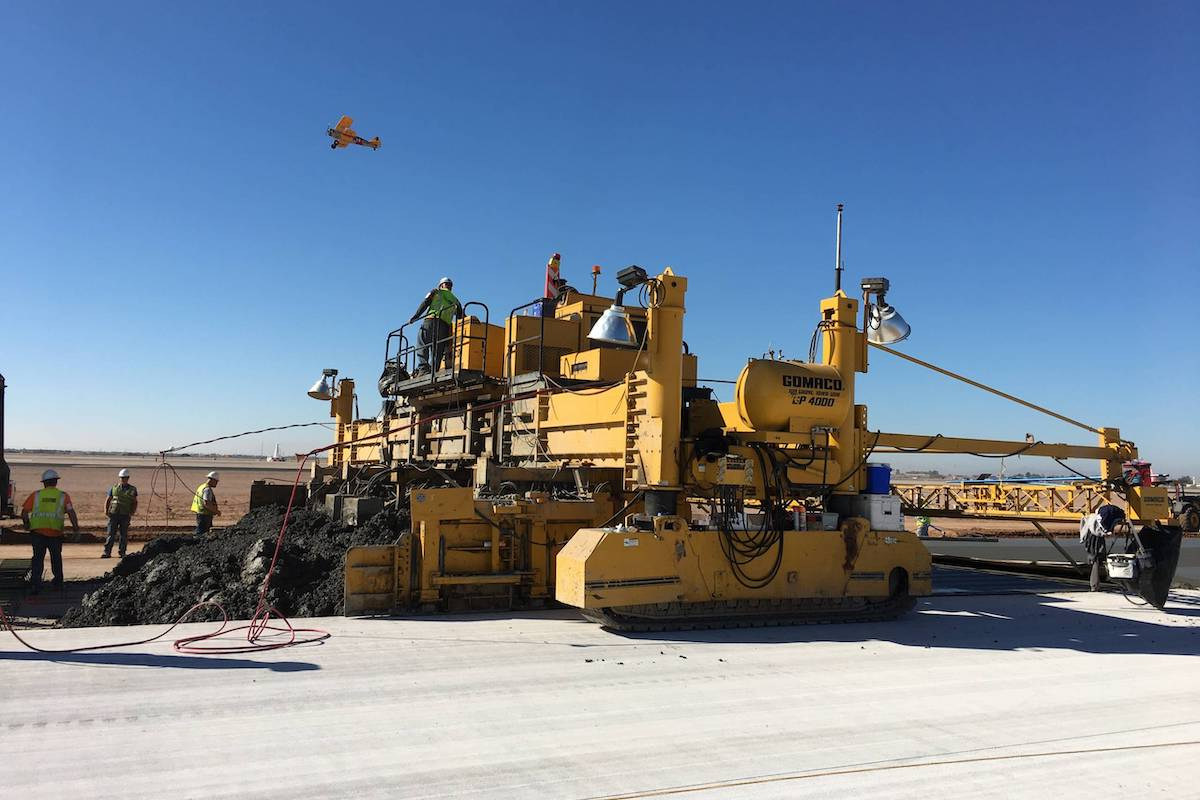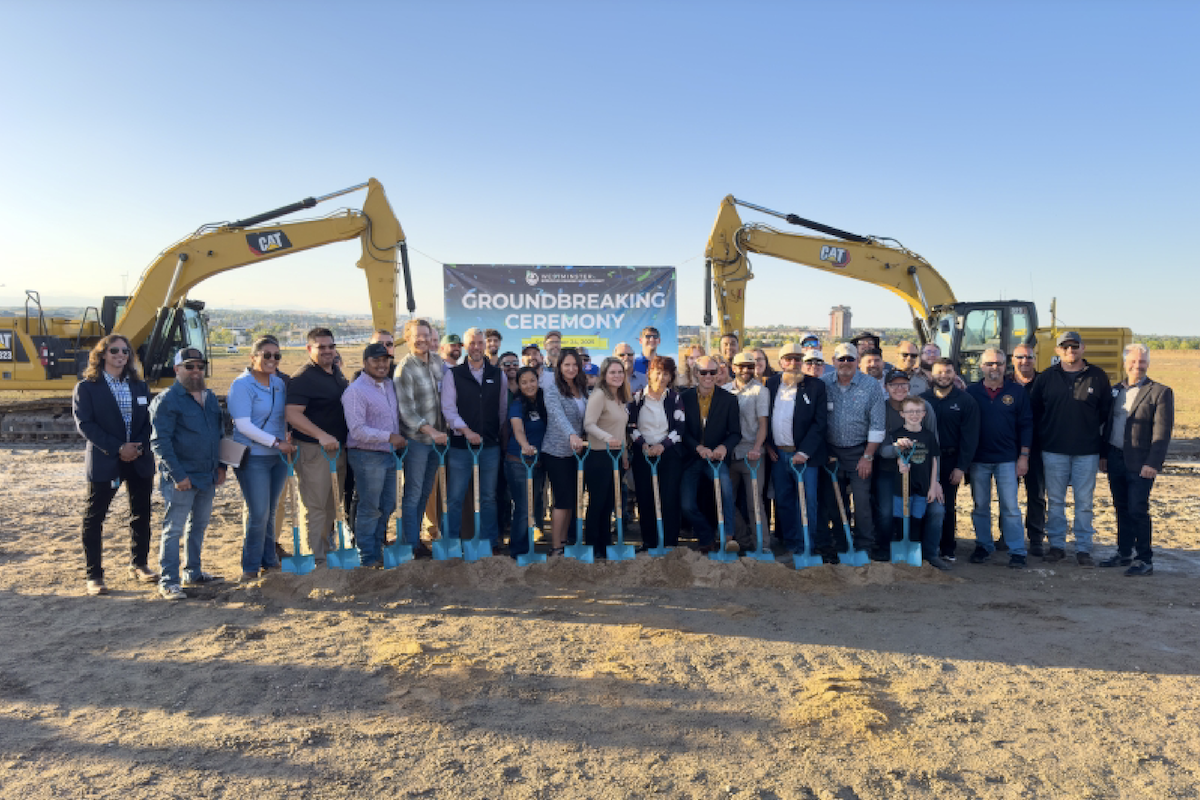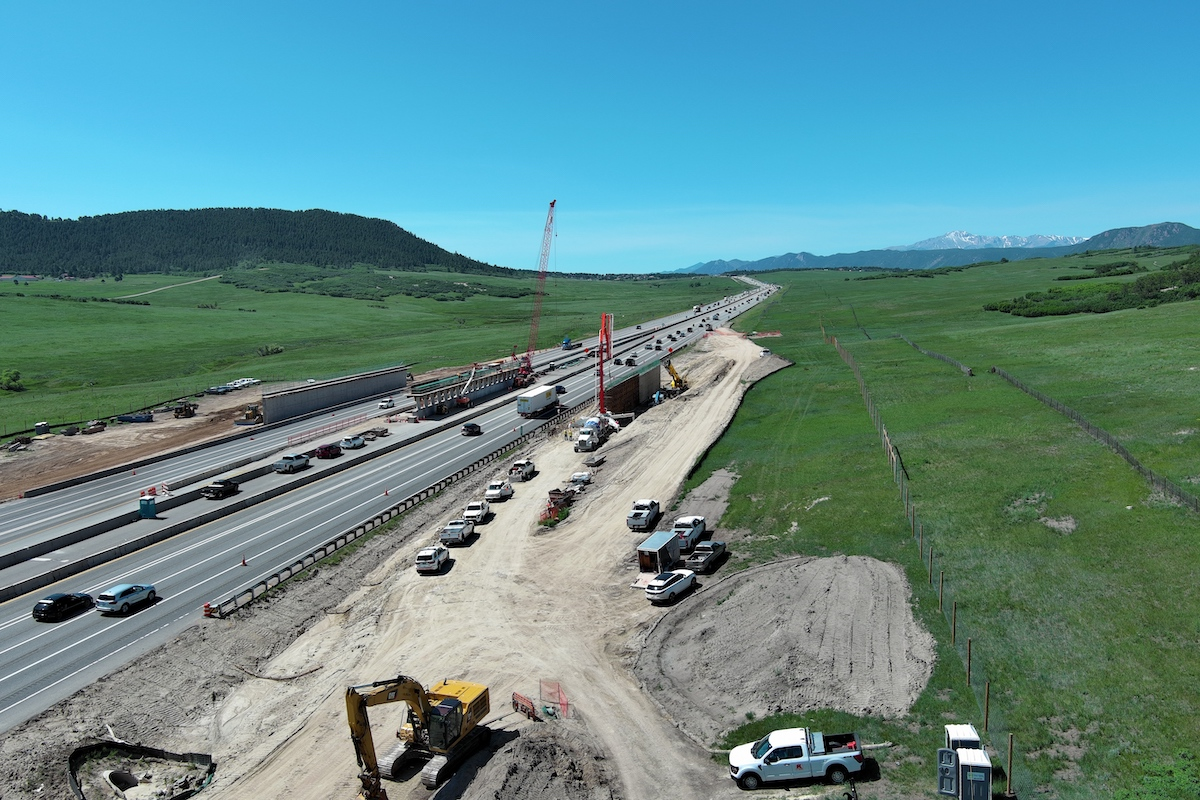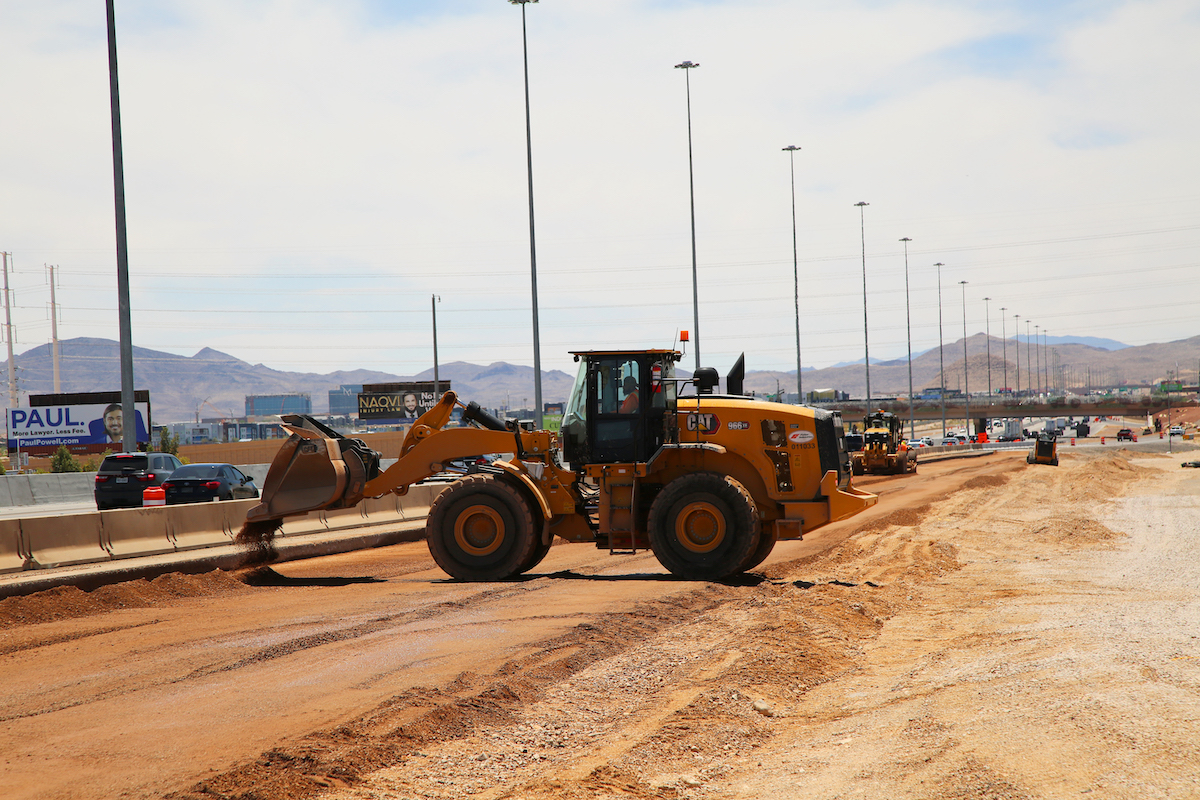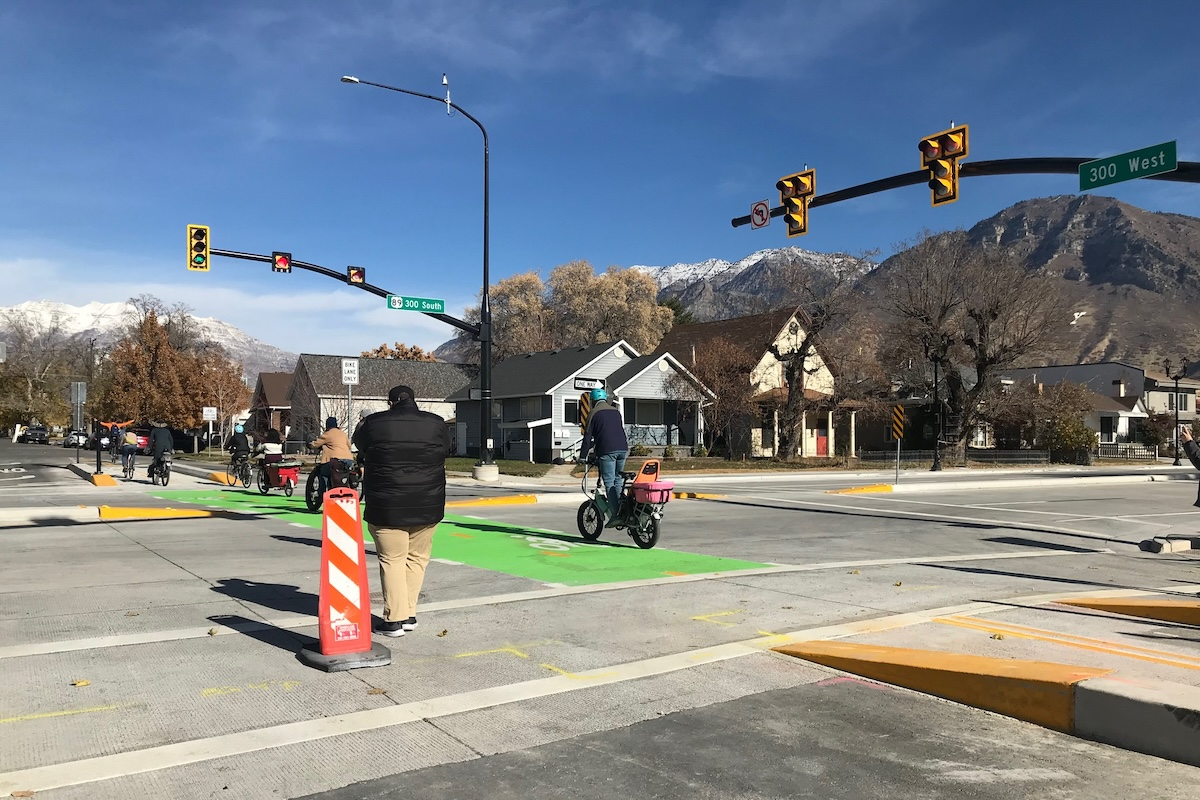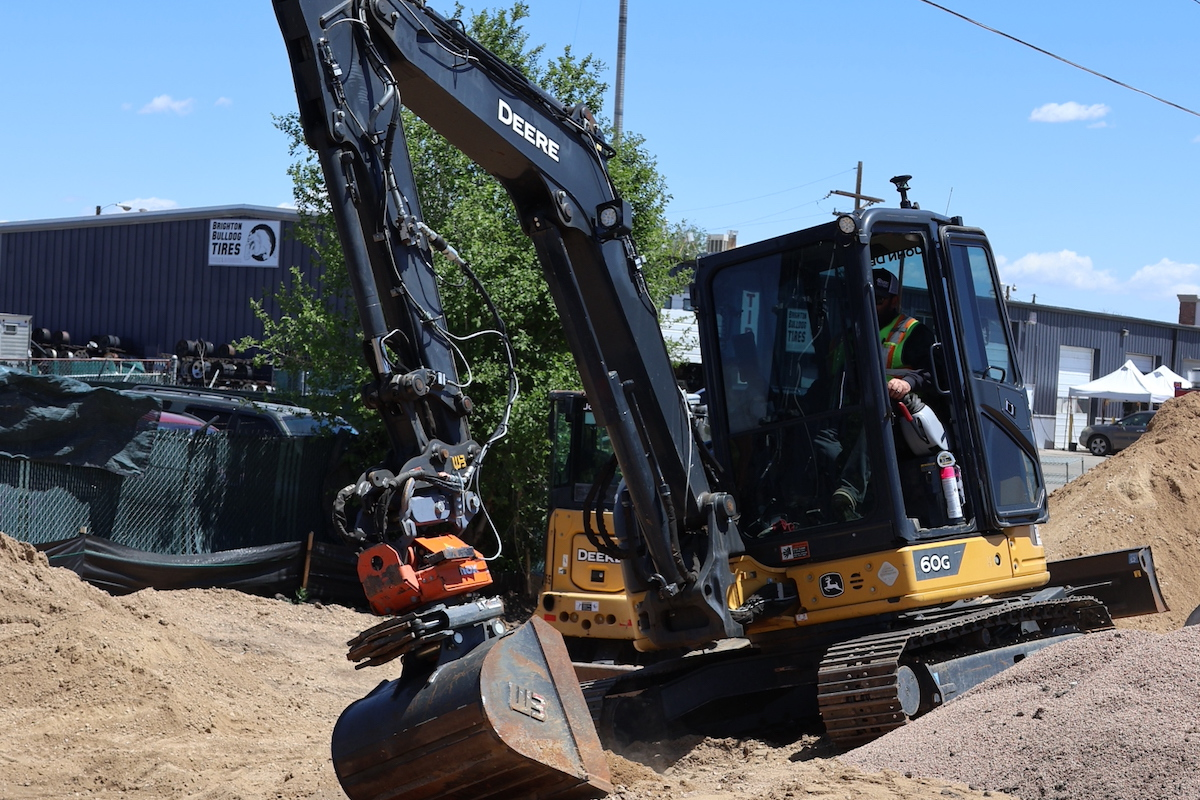When finished, the new facility will become the fourth drinking water treatment plant in Denver Water’s system, capable of supplying 75 million gallons per day (MGD) initially and expandable to 150 MGD. Built on 180 acres next to the utility’s Ralston Reservoir, the Northwater site incorporates seven primary buildings and auxiliary facilities, including tanks, pump stations, vaults, and two 300-foot diameter, 33-foot-tall, 10-million-gallon capacity clearwells.
The new Northwater plant will supplement the aging Moffat Treatment Plant, built in Lakewood, Colorado, in the 1930s. Denver Water will reduce Moffat’s capacity to extend its useful life for two more decades.
This is part of Denver Water’s North System Renewal effort, a primarily bond-funded project that includes the new treatment plant; a new, 8.5-mile pipeline to connect Northwater to Moffat; and upgrades to the Moffat plant.
Denver Water awarded the project’s qualifications-based Construction Manager at Risk (CMAR) contract to Kiewit in August 2016 so they could provide input during design. In August 2018, they started construction. The new pipeline was completed in September 2021 and Moffat plant improvements finished in July 2022. The Northwater plant is currently scheduled to be substantially complete and operational in first quarter 2024.

| Your local Volvo Construction Equipment dealer |
|---|
| Faris Machinery |
“We were figuring out what made the most sense to design and build out here,” said Travis Baumgartner, Kiewit’s Project Manager. “It was an organized, facilitated event that took place over a week. Being able to hear and understand different perspectives that early in the design really helped develop the team in working through challenges.”
Good thing, because challenges soon arose. Denver Water owned the property since the 1930s, but at about 20 percent design, the team discovered that a 100-year-old mine lay 500 feet below the construction site.
“We were very fortunate that one of our geotechnical engineers happened to be in one of the local mining museums and put two and two together from some of the data he read about the mine,” said Jill Crockett, P.E., PMP, PgMP, Jacobs’ Project Manager.
Unfortunately, “The ideal site plan we laid out at the continuous improvement lean event turned out to have our two most expensive, largest, and heaviest water-bearing structures overlaying the coal mine,” she said. “We went to work and redesigned the entire plant site, and now we use the area over the mine as a stockpile and work yard.”
“As we were building that 84-inch pipe, it was sufficient to undermine the adjacent steep slopes,” Crockett said. “It basically created a crevasse down into the side of the slope, and the top part of the slope started sliding down toward where we were building.”

| Your local Trimble Construction Division dealer |
|---|
| SITECH Southwest |
| SITECH Northwest |
| SITECH Rocky Mountain |
Work stopped as the design team altered portions of the pipeline alignment. “We also created a buried retaining wall that goes about 30 feet underground to hold back any additional movement of the hillside,” Crockett said.
When construction resumed, surveyors checked stakes on the slope every morning to see if there was any movement that could endanger workers.
The pipeline work began in late 2018. With the added retaining wall, adjusted alignment, and geotechnical monitoring, crews didn’t finish until the end of 2019, much later than originally scheduled.
“It was fortunate that we kicked off that work while design was ongoing,” Crockett said. “We completed the design of the facility in December 2019, so even with the delay, that early work didn’t affect the overall project schedule.”
The team established obeyas, a word that means “big room” in Japanese and comes out of the lean approach.

| Your local Bobcat dealer |
|---|
| Ditch Witch West |
| Faris Machinery |
| Romco Equipment Co |
“The idea is that rather than lobbing paper across email or an online network, we get the critical members of a specific discipline team in a room together,” Crockett explained. “That involves people from construction, design, our area engineers, and the inspection team. They’re authorized to make decisions at the lowest level, such as reviewing a work plan or submittal.”
Each discipline meets once a week. “If they come to agreement on an issue, it never leaves the room,” Crockett said. “They share the answers with the field crews and work continues. With typical turnaround for a submittal at 20 working days and for an RFI at 10 days, being able to answer those questions every week saves significant time and effort.”
Every Thursday, Baumgartner, Crockett, and Denver Water’s Project Manager, Peter McCormick, P.E., PMP, hold “office hours,” spending 30 minutes with each obeya.
“It’s rapid fire – what do you need to escalate?” Crockett said. “Those meetings have been helpful in making sure we’re tuned into what each team is going through, and we can aid in cross-discipline coordination.”
In addition to the obeyas, regularly scheduled contractor planning meetings have been critical in keeping the project on schedule, Baumgartner said. Due to the quantity of work and Denver Water’s desire to promote project participation by as many local firms as possible, Kiewit will coordinate almost 100 subcontractors.

| Your local Gomaco dealer |
|---|
| Faris Machinery |
“As the CMAR, we had a vision of the sequence of work that needed to happen, then we brought in all these different subcontractors and they bring their unique vision of how to approach the job, so we incorporate that into our broad vision,” he said.
The overall project schedule gets periodic updates through rolling wave planning.
“We had an initial schedule, then in 2020, roughly two years into construction, we rebaselined for the coming two years,” Crockett said. “Then early this year, Kiewit and their team undertook a second rebaseline, really getting into the nitty gritty of all the trades working interior to the buildings. We plan out what we can in the immediate foreground and then down the road we look in more detail once the job progresses.”
“The hydropower is able to supply the Northwater Treatment Plant’s power demand over an annual period, so we’re actually a net producer,” Crockett said.
However, because power needs will fluctuate seasonally, when the plant needs additional power it can pull from the energy grid. When the hydro turbine produces more than what’s needed onsite, it will feed power back into the grid.

| Your local Volvo Construction Equipment dealer |
|---|
| Faris Machinery |
The site’s landscape helped make hydropower a feasible solution. “There’s a natural hill in the area and we built a large portion of the main structures into that hillside,” Baumgartner said.
According to Crockett, “In addition to aesthetic impacts on the Front Range – which are pretty important to most of the people who live here – the primary purpose of burying the structures in the hillside is to reduce power consumption. In order for the hydropower to feed the bulk of the process loads throughout the year, we needed to reduce heating and cooling loads. When we recently walked into the filter building, it was 30 degrees cooler than the ambient outside temperature just because of being buried.”
The project already received Envision Gold certification from the Institute for Sustainable Infrastructure, and the team will pursue LEED Gold certification for the plant’s operations building, the only structure to regularly house people. Other features, such as advanced treatment technologies, will improve the resiliency of Denver Water’s system in times of potentially challenging treatment issues, such as those created by droughts or wildfires.
- 600,000 cubic yards of excavation and backfill
- 44,000 cubic yards of concrete
- 125 miles of pipe and conduit
Photos courtesy of Denver Water









